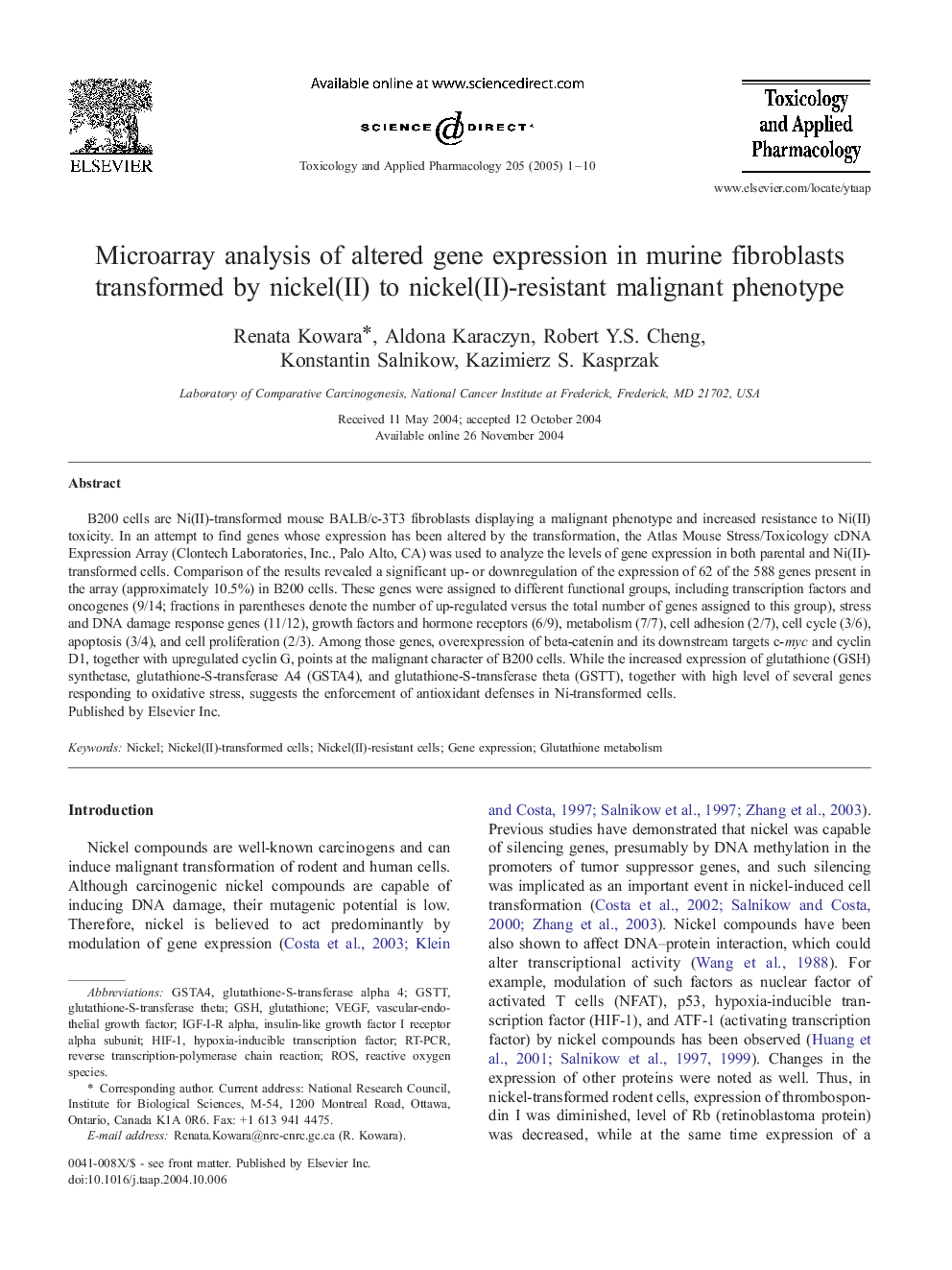| Article ID | Journal | Published Year | Pages | File Type |
|---|---|---|---|---|
| 9017856 | Toxicology and Applied Pharmacology | 2005 | 10 Pages |
Abstract
B200 cells are Ni(II)-transformed mouse BALB/c-3T3 fibroblasts displaying a malignant phenotype and increased resistance to Ni(II) toxicity. In an attempt to find genes whose expression has been altered by the transformation, the Atlas Mouse Stress/Toxicology cDNA Expression Array (Clontech Laboratories, Inc., Palo Alto, CA) was used to analyze the levels of gene expression in both parental and Ni(II)-transformed cells. Comparison of the results revealed a significant up- or downregulation of the expression of 62 of the 588 genes present in the array (approximately 10.5%) in B200 cells. These genes were assigned to different functional groups, including transcription factors and oncogenes (9/14; fractions in parentheses denote the number of up-regulated versus the total number of genes assigned to this group), stress and DNA damage response genes (11/12), growth factors and hormone receptors (6/9), metabolism (7/7), cell adhesion (2/7), cell cycle (3/6), apoptosis (3/4), and cell proliferation (2/3). Among those genes, overexpression of beta-catenin and its downstream targets c-myc and cyclin D1, together with upregulated cyclin G, points at the malignant character of B200 cells. While the increased expression of glutathione (GSH) synthetase, glutathione-S-transferase A4 (GSTA4), and glutathione-S-transferase theta (GSTT), together with high level of several genes responding to oxidative stress, suggests the enforcement of antioxidant defenses in Ni-transformed cells.
Keywords
Related Topics
Life Sciences
Environmental Science
Health, Toxicology and Mutagenesis
Authors
Renata Kowara, Aldona Karaczyn, Robert Y.S. Cheng, Konstantin Salnikow, Kazimierz S. Kasprzak,
